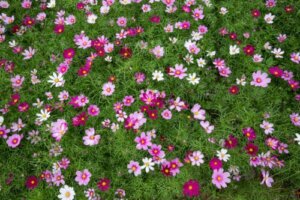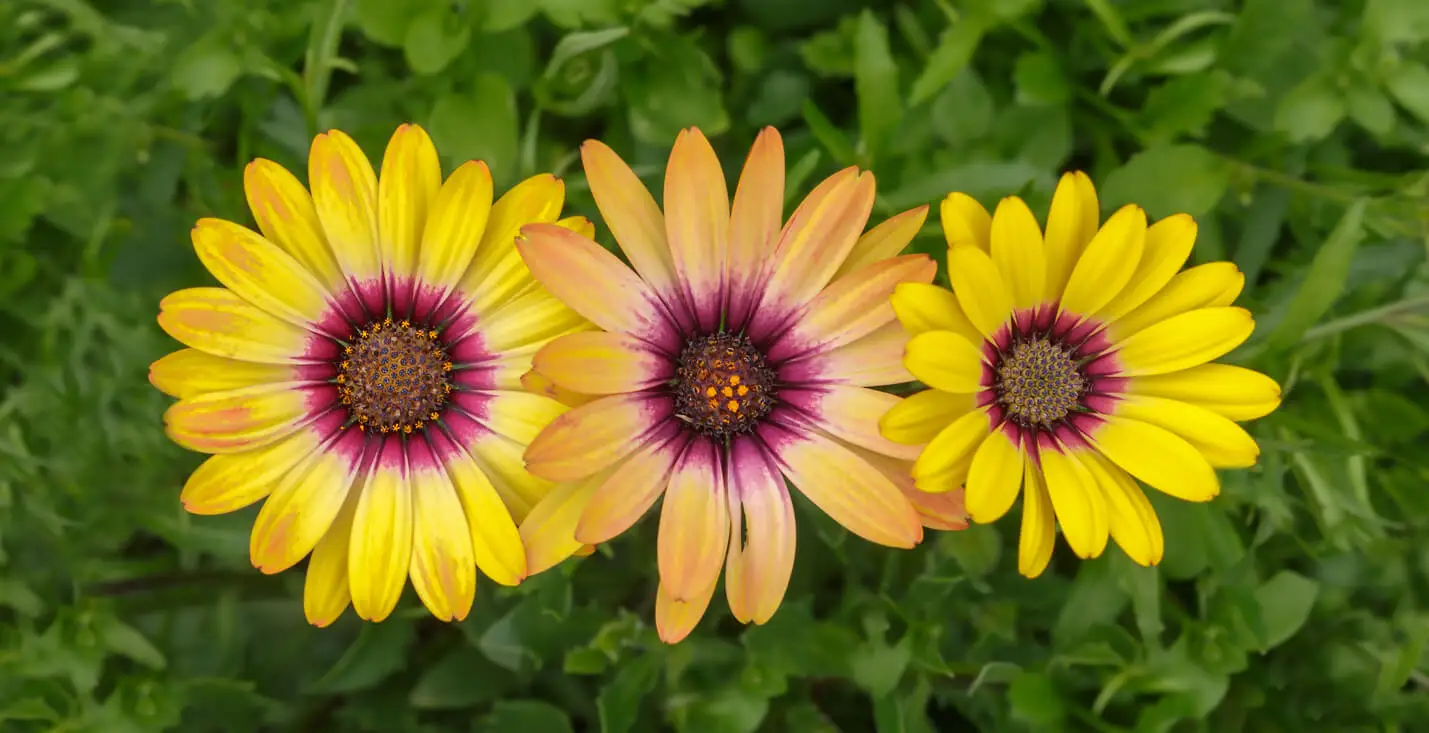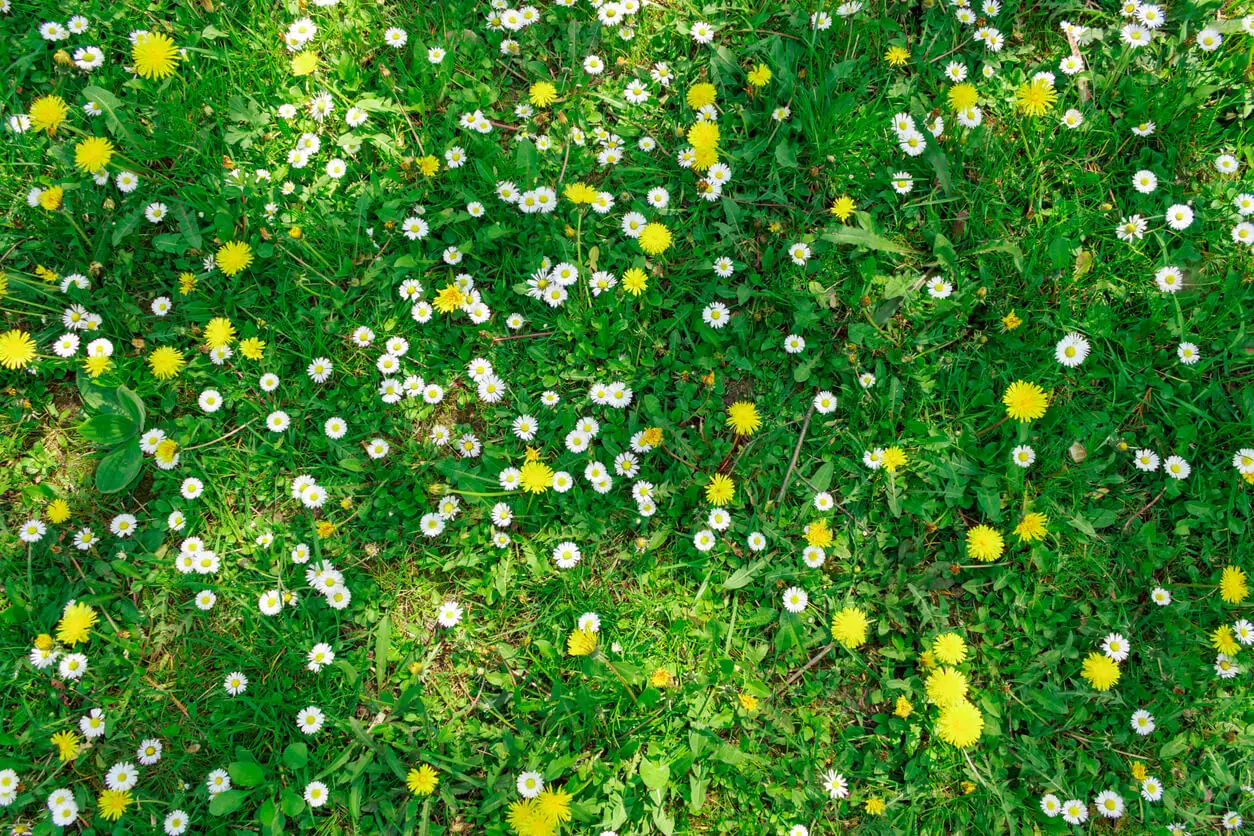All About Japanese Grass and How to Care For It

Can you imagine the combination of the intense green mantle of a uniform lawn with the pink, yellowish, and white tones of different flowers? It looks like an ideal garden; however, this is a very simple landscape to achieve. You just have to find out what Japanese grass is and how to take care of it.
You’ve probably seen this type of grass in different private yards or public places, as it’s a type of grass that is increasingly used. This is due to its ease of planting, the basic maintenance it requires, and, above all, the multiplicity of colors it brings to the garden.
Discover what Japanese grass is
Japanese grass is, simply put, a combination of grass seeds and various flowers that germinate in a mixture of colors. Therefore, when planting seeds of this style, the result is a uniform garden where green color abounds.
However, it combines pink, yellow, and white tones that add the seeds of different flowers. Some of them are poppies or daisies, but it contains many more. In this way, the Japanese lawn brings a very aesthetic character to the space where it is installed, so it can be seen in various private and public gardens.
In addition, it is a meadow with ease of cultivation. Getting this colorful garden is very simple and functional since it grows very uniformly.
Beyond its aesthetics, Japanese grass covers the surfaces without leaving empty spaces, while it provides great resistance to all types of climates. However, it prefers warm or tropical temperatures.
We think you may also enjoy reading this article: The Health Benefits of Couch Grass and its Contraindications
The main characteristics of Japanese grass
To know why Japanese grass germinates with a pleasant mixture of colors, ideal for an ornamental garden, it’s necessary to know its main characteristics.
Composition
As it is a mixture of seeds, many flowers can integrate the whole. In general, seeds of poppies, daffodils, snapdragon arias, and daisies are placed, which add to the green color of the lawn. Therefore, it’s common to see a lawn with yellow, orange, green, red, and white shades.

Height
This colorful combination of flowers and grass can reach a height of up to 50 centimeters. However, it is usually between 30 and 50 centimeters.
Seeding and flowering of Japanese grass
Although it is a type of grass with great resistance to different climates and times of the year, its main development occurs in temperate environments. Flowering usually occurs between July and October, so it’s recommended to sow between April and June.
Flowering tends to occur about two months after planting.
At the same time, the grass grows uniformly, covering the entire space and leaving few or no empty spaces. For this reason, Japanese grass is often used in ornamental gardens or sports fields.
Area and method of installation
It is not necessary to remove all the existing turf to lay Japanese grass. It is a very versatile grass that can be planted in combination with other grasses. In addition, it can be installed in any area of the garden, with preference given to areas where it is not cut too much, as the flowers would be affected.
Planting Japanese grass and how to care for it
Despite the aesthetics and colorful landscape it brings to the garden, planting Japanese grass is very simple. It is enough to have the basic tools and a set of commonly sold seeds.
1. Get the seeds
More and more people are installing this type of lawn, so it is widely marketed. Japanese grass variants are available in many nurseries, garden stores, or on internet portals.
They do not require any pre-planting process, except for kits that come with compacted coconut substrate tablets. In that case, fill a container with water and soak them.
2. Stir the substrate
It is not necessary to do a lot of work on the substrate, but it should be stirred a little so that it is not so compact. It’s necessary to generate some small cracks that allow the insertion of the seeds and their later germination.
3. Plant the seeds
The placement should not be done at great depth. It’s enough to insert the seeds to half a centimeter or a centimeter and cover them well with a substrate. Make different holes and insert three to five seeds in each hole.
4. Maintain the ideal humidity
To favor the germination in its first stage, it is necessary to maintain the substrate humidity delicately using a sprayer. Avoid that the seeds move from place to place and, above all, that the soil becomes waterlogged.
5. Keep an eye on the temperature
During the germination process, the temperature becomes somewhat more delicate. Ideally, it should be around 25 degrees Celsius and constant direct sunlight should be avoided.
However, the most important thing is to avoid periods of frost and sudden changes in temperature. The seeds should be protected from cold weather, especially in the first two weeks of planting.

How to maintain Japanese grass
Just as planting is simple, so is its daily care. Once grown, Japanese grass has great resistance to different weather conditions and does not take much maintenance time.
- Pruning. It should not be mowed frequently, as its flowers may be affected.
- Watering. Water it sporadically, unless there is a dry season. In that case, increase the frequency.
- Temperature and drought. Japanese grass withstands almost any temperature very well, except for frost. It also withstands drought, as long as the watering frequency is increased.
- Winter. It’s normal that, during the winter months, the most colorful flowers disappear or turn yellow. When the spring arrives, they resume their splendor.
Like this article? You may also like to read: Simple Steps to Maintain a Healthy Lawn in the Spring
Japanese grass and a beautiful lawn
Covering the outside of the home with Japanese grass adds a colorful, springtime ambiance. With just a few steps in its planting and very simple care, it’s possible to opt for a cheerful and functional option that makes your entire lawn look beautiful.
All cited sources were thoroughly reviewed by our team to ensure their quality, reliability, currency, and validity. The bibliography of this article was considered reliable and of academic or scientific accuracy.
- Arango, Anthony, Ascencios, David, Meza, Karem, & Pino, Edwin. (2021). Efecto de la frecuencia de riego en la calidad del césped americano utilizando sistema de riego por goteo subterráneo controlado vía internet. Idesia (Arica), 39(3), 21-31. https://dx.doi.org/10.4067/S0718-34292021000300021
- Galli, M., Carponi, M. S., Reinoso, P. D., Laurencena, M. I., Butus, M., & Scorciapino, C. (2007). Césped deportivo: comportamiento del cultivar AZ-1 de Pennisetum clandestinum Hochst. ex Chiov. (kikuyo). Paraná, Entre Ríos, Argentina. Revista de la Facultad de Ciencias Agrarias, XXXIX(2),81-90.[fecha de Consulta 29 de Enero de 2023]. ISSN: 0370-4661. Recuperado de: https://www.redalyc.org/articulo.oa?id=382837654010
- Jáuregui Vera, M. Á. (2017). Factores de riego en tres especies de césped en las áreas verdes de la UNALM. Universidad Nacional Agraria La Molina. Universidad Nacional Agraria La Molina. Retrieved from http://repositorio.lamolina.edu.pe/handle/20.500.12996/3365
- Parracia, A. N. (2012). Césped: principales especies, manejo y métodos de propagación usados en parques y jardines [en línea]. Trabajo Final de Ingeniería en Producción Agropecuaria. Facultad de Ciencias Agrarias. Universidad Católica Argentina. Disponible en: https://repositorio.uca.edu.ar/handle/123456789/459
This text is provided for informational purposes only and does not replace consultation with a professional. If in doubt, consult your specialist.








